Case study 7: Hungary: Diversification of cereal-based rotations with soybean
Cluster 2: Crop diversification under adverse conditions
In Hungary, crop rotations with cereals are usually very simple. While diversification is a key element in organic cereal production, the rotations are not always very profitable. In order to improve this, different agronomic solutions can be implemented. Based on previous research on soybeans, the case study team decided to continue the work on developing cultivation techniques to make this crop more popular for organic arable farmers. The goal is to find out how farmers could successfully grow soybeans as a main or secondary crop in different parts of the country to diversify their cereal rotations. Another aim of the case study is to develop cheap and simple processing methods and link the actors of the soybean sector for a more developed value chain with stable production and processing of soybean products.
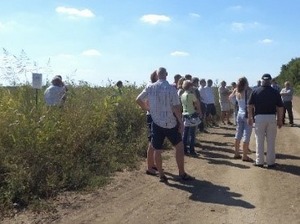
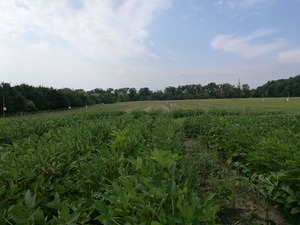
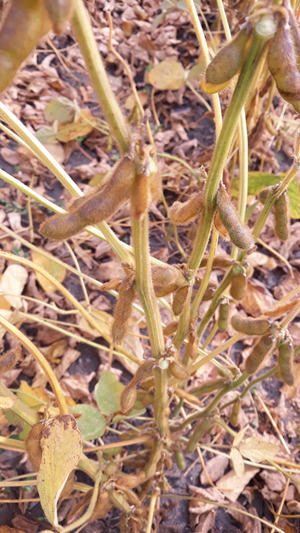
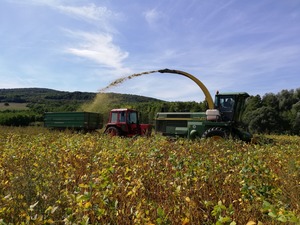
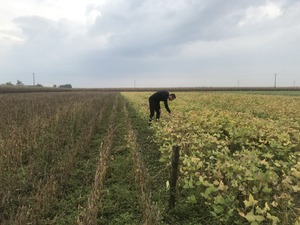
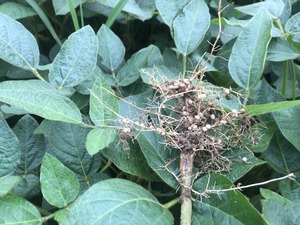
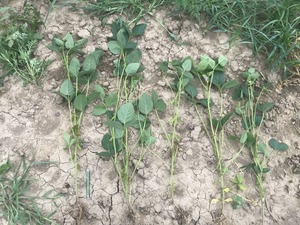
What were the main problems underlying the emergence of the case study?
In order to increase the effectiveness of the current system, agronomic elements should be improved. Currently, leguminous plants in the organic arable rotation are represented mostly by alfalfa, while grain legumes are only grown on small areas. Cereals remain dominant because of several limitations. For example, super early varieties were not available on the market, which are essential for the secondary cropping of soybeans. In most cases, farms still do not have the necessary equipment and know-how for successful mechanical weed management in soybean and the low volume of organic soybean production did not generate enough interest from the processors' side to make them invest in organic forage production. Furthermore, the production is not integrated, and some doubt remains from the farmers' side regarding soybean cultivation, which further inhibits the chances to export organic soybeans to European markets. Other important elements regarding the upstream and downstream value chain were also missing.
How were the problem addressed and which actors were involved?
Organic soybean production uses less than 2 % of organic arable land in Hungary, showing the potential to increase the number of producers. The variety testing case study was initiated by ÖMKi in 2013, which later cooperated with 5 organic farms, 3 seed companies, and 2 companies distributing microbiological inoculants. This activity continued in 2017 and 2018 with on-farm testing and with field trials. Besides the varieties, the efficacy of soil and seed treatment was also investigated. Some initiatives regarding the secondary cropping with soybean in surrounding countries (e.g. Austria) already took place. Therefore in 2018, we started a pioneering experiment to develop organic secondary-crop soy technology in Hungary. We managed to cultivate soybean after barley by using super early (000) varieties. The yields are between 1.4 and 1.8 t/ha, with over 40 % protein content. Since then other cultivation methods have been tested (no-till, min-till, different row spacing, etc.) in different on-farm trials.
ÖMKi is still in contact with the input distributors, big forage producers, and the Hungarian Soybean Association to increase the interest in the organic market. But of course, ÖMKi is collaborating with small manufactures as well, to test cheap alternative processing methods for direct sale or self-usage of soybean.
Solution investigated
A close connection with the farmers during on-farm experiments will be maintained, which is expected to result in better exchange and enhanced crop diversification. It is crucial to support the creation of a network between farmers, seed producers and processors as well and to accelerate the flow of information with professional events, knowledge transfer and publications.
The result of the variety tests and experiments with different cultivation techniques showed that with the right machinery and knowledge, profitable cultivation of soybean is possible as the main and also as the secondary crop, but irrigation is crucial and it is currently not widespread in the practice. The information and know-how are frequently presented to the farmers via different field demonstrations, videos, conferences and leaflets.
Based on the result of the tests and experiences, it seems that the main barriers to a greater increase in organic soybean production are not only related to cultivation techniques. Until the acreage of organic soybean reaches a significant level, the big processors will not invest in this value chain, which leaves the market uncertain. To motivate farmers to cultivate soybean, a stable or growing market is necessary. Besides the improvement of cultivation techniques, ÖMKi is developing a processing method together with small manufacturers that does not require substantial investment and makes the processing of the whole plant possible, and not only the dried grains for animal feed. Niche markets directed at human consumption are constantly being monitored. The domestic market for organic soybean products is quite small and already well covered, but in most cases the raw material is imported.
Expected outcome
Breaking the predominance of cereals in organic arable rotations is very important to achieve diversity and sustainability. The vision of the case study is that soybean will soon become an important element of the arable cropping system and that this will pique the farmers' interest towards other grain legumes in the future. The well-developed cultivation and processing technique can make on-farm soybean cultivation possible in farms with animal husbandry and may motivate other organic farms to keep animals. The renovation of the national irrigation network and the direct support for farms to grow their irrigation capacity are also good opportunities to improve the efficacy of soybean cultivation. As soon as organic soybean is available in large quantities on the market, big companies will also invest in organic processing, motivating the stockless farms to cultivate soybean.
Furthermore, there is a clear trend towards plant-based protein and meat alternatives in human diets. I If consumer demand increases, long-term growth of that market can also be assumed. In cooperation with every part of the value chain, it can be a success story of domestic organic production.
On the international market, the demand for fair-trade soybean from EU countries is constantly increasing. If the sector becomes better integrated, effective and stable export activities could also pique the farmers' interest in soybean production and decrease the dependency on the global soybean market.
Relevance of the DiverIMPACTS goals
Our case study is part of a cluster of cases involving adverse environmental conditions. Rainfall variability, especially, can severely hinder the inclusion of soybeans in crop rotations in Hungary. It draws attention to water retaining practices, e.g. using cover crops or reduced tillage. If soybeans become an important cash crop in organic rotations and increase the net income, farms will be able to invest in other good practices towards diversity and sustainability. Via biological nitrogen fixation, the demand for an external source of nutrients could decrease and also improve the efficacy of production. By following the newest trends in the food and feed market as well as adopting good practices regarding biodiversity and environment management, we are approaching a more sustainable and safe agricultural system.
Case study legacy
Diversification of cereal-based rotations with soybean will continue with further development of value chains related to forage production and protein crop processing methods. In the last year, two new feed producers joined to our initiative who are open to organic feed and forage production. The whole-plant soybean processing method and pelleting process, initiated and developed in the framework of the DiverIMPACTS project will be further improved and tested to adapt it to alfalfa.
Making these diversified rotations a common agricultural practice is necessary both for organic and conventional farmers to deal with increasing global insecurity of protein supply. Therefore, based on the results of our case study, we will also continue to promote diversification through crop rotation including soybean as secondary crop.
Further information
Links
- biokutatas.hu: About DiverIMPACTS
- biokutatas.hu: Expanding crop rotation with soybeans
- biokutatas.hu: Soy variety, soil and seed treatment trials
- biokutatas.hu: Organic Soybeans – Cultivation and value chain
Case study team
- Éva Hunyadi, ÖMKi, case study leader
- Bence Trugly, ÖMKi, case study monitor
 tap and then scroll down to the Add to Home Screen command.
tap and then scroll down to the Add to Home Screen command.